Introduction
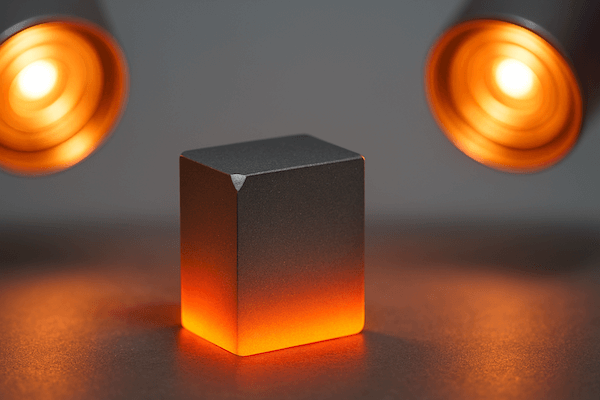
In the realm of advanced materials, tungsten carbide (WC) stands out for its exceptional hardness, wear resistance, and high melting point. These properties make it indispensable in a variety of industries, including mining, aerospace, manufacturing, and automotive sectors. Among its numerous advantageous characteristics, thermal stability is a pivotal property that significantly influences the performance and longevity of tungsten carbide components under extreme conditions. Understanding thermal stability in tungsten carbide is crucial for optimizing its applications and ensuring that it meets the demanding requirements of modern industrial processes. This article delves into the concept of thermal stability in the tungsten carbide industry, exploring its significance, underlying mechanisms, factors affecting it, methods to enhance it, and its impact on various applications.
What is Thermal Stability?
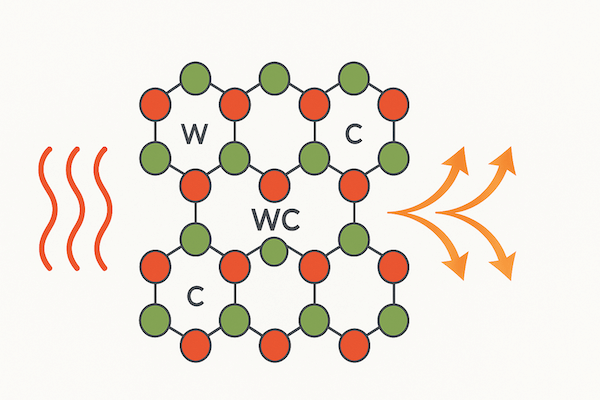
Thermal stability refers to a material’s ability to maintain its structural integrity and desirable properties when exposed to high temperatures over extended periods. In the context of tungsten carbide, thermal stability encompasses its resistance to thermal degradation, oxidation, and phase transformations that can occur at elevated temperatures. A thermally stable tungsten carbide material retains its hardness, strength, and wear resistance even when subjected to extreme heat, making it suitable for high-temperature applications.
Why is Thermal Stability Important in Tungsten Carbide?
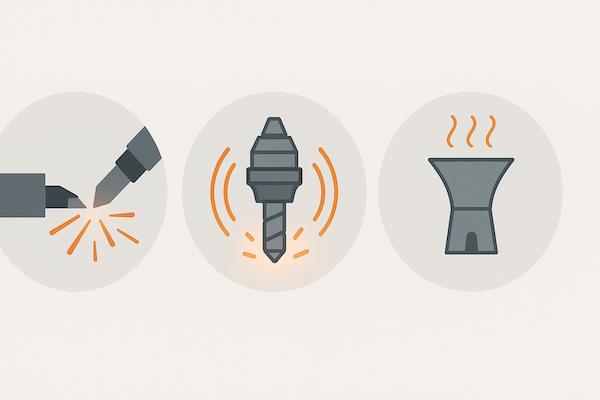
The importance of thermal stability in tungsten carbide cannot be overstated, especially given its widespread use in environments where high temperatures are prevalent. Here are key reasons why thermal stability is crucial:
High-Temperature Applications
Tungsten carbide is often used in cutting tools, mining equipment, and aerospace components that operate under intense heat. Thermal stability ensures that these tools do not lose their hardness or wear resistance when exposed to high temperatures, thereby maintaining their performance and extending their service life.
Oxidation Resistance
At elevated temperatures, materials are prone to oxidation, which can degrade their properties. Thermally stable tungsten carbide resists oxidation, preventing the formation of brittle tungsten oxides that can compromise the material’s integrity and functionality.
Dimensional Stability
Thermal expansion can lead to dimensional changes in materials, affecting the precision and fit of components. Tungsten carbide with high thermal stability exhibits minimal thermal expansion, ensuring that parts maintain their dimensional accuracy even under thermal stress.
Process Efficiency
In manufacturing processes such as high-speed machining and laser cutting, tools are exposed to rapid temperature fluctuations. Thermally stable tungsten carbide can withstand these thermal cycles without significant degradation, enhancing process efficiency and reducing downtime due to tool wear or failure.
Mechanisms Behind Thermal Stability in Tungsten Carbide
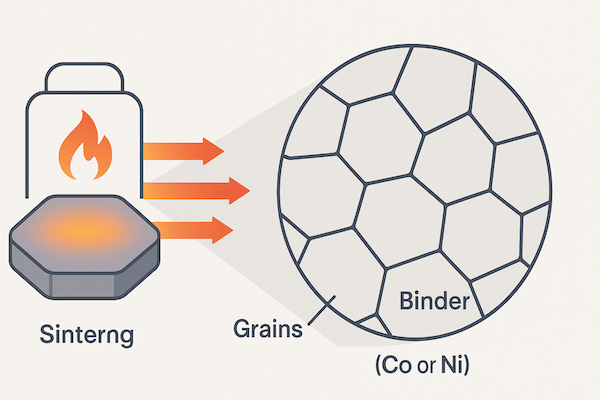
The thermal stability of tungsten carbide is influenced by its microstructure, composition, and the sintering process used during its production. Understanding these mechanisms is essential for optimizing thermal stability:
Microstructure
The grain size and distribution of tungsten carbide grains play a significant role in thermal stability. Finer grains tend to enhance thermal stability by providing a more uniform structure that resists thermal stresses. Additionally, the presence of a homogeneous binder phase (typically cobalt or nickel) contributes to the material’s ability to withstand high temperatures without significant degradation.
Composition
The addition of alloying elements such as cobalt, nickel, chromium, or molybdenum can enhance the thermal stability of tungsten carbide. These elements form stable phases that improve the material’s resistance to oxidation and thermal degradation. For example, nickel-bonded tungsten carbide exhibits superior thermal stability compared to cobalt-bonded variants, making it suitable for high-temperature applications.
Sintering Process
The sintering temperature, duration, and atmosphere significantly impact the thermal stability of tungsten carbide. Proper sintering ensures full densification, minimizing porosity and enhancing grain bonding, which in turn improves thermal stability. Sintering in a controlled atmosphere, such as hydrogen or vacuum, prevents oxidation during the process, further enhancing the material’s thermal resistance.
Factors Affecting Thermal Stability in Tungsten Carbide
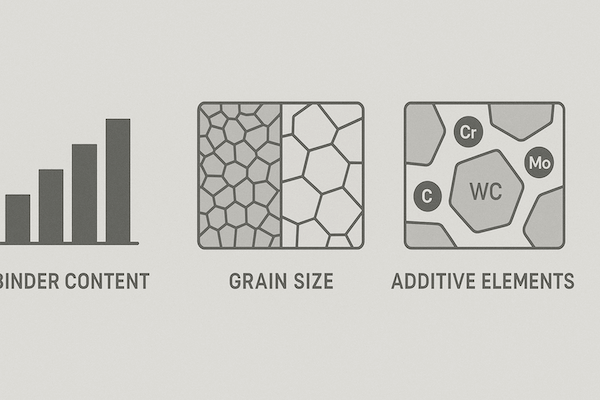
Several factors influence the thermal stability of tungsten carbide, including:
Binder Content and Type
The percentage and type of binder material affect thermal stability. Higher binder content can improve toughness but may reduce thermal stability due to the binder’s lower melting point. Choosing binders like nickel, which offer better oxidation resistance, can enhance thermal stability compared to cobalt.
Grain Size
As mentioned earlier, smaller grain sizes contribute to better thermal stability by providing a more uniform microstructure that resists thermal expansion and stresses. Controlling grain size during the sintering process is thus critical for optimizing thermal stability.
Additives and Alloying Elements
Elements like chromium, molybdenum, and titanium can be added to tungsten carbide to form stable carbides (e.g., CrC, MoC, TiC) that enhance thermal stability. These additives act as grain growth inhibitors and improve the material’s resistance to high-temperature degradation.
Sintering Parameters
Precise control over sintering temperature, time, and atmosphere is essential. Over-sintering can lead to excessive grain growth, reducing thermal stability, while under-sintering may result in incomplete bonding and higher porosity, which also negatively impacts thermal stability.
Operational Environment
The specific conditions under which tungsten carbide is used, including temperature range, exposure to oxidizing agents, and thermal cycling, directly affect its thermal stability. Designing tungsten carbide components for specific environments requires a thorough understanding of these factors.
Enhancing Thermal Stability in Tungsten Carbide
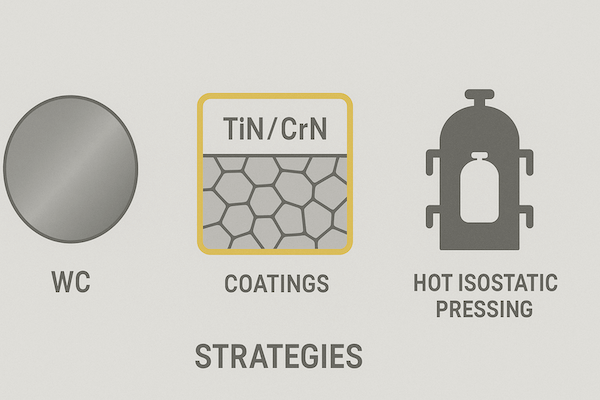
To maximize the thermal stability of tungsten carbide, manufacturers employ several strategies:
Optimizing Binder Content
Balancing the binder content to achieve the desired toughness without compromising thermal stability is crucial. Using nickel-based binders instead of cobalt can significantly enhance thermal stability.
Grain Refinement
Techniques such as adding grain growth inhibitors (e.g., tantalum carbide) during powder preparation can help maintain a fine grain size, thereby improving thermal stability.
Advanced Sintering Techniques
Utilizing advanced sintering methods like hot isostatic pressing (HIP) ensures full densification and minimizes porosity, enhancing the material’s resistance to thermal degradation.
Surface Coatings
Applying protective coatings, such as titanium nitride (TiN) or chromium nitride (CrN), can provide an additional barrier against oxidation, further improving thermal stability.
Alloying with Stabilizing Elements
Incorporating elements that form stable carbides at high temperatures can enhance the overall thermal stability of tungsten carbide. For example, adding molybdenum can improve resistance to high-temperature oxidation.
Applications of Thermally Stable Tungsten Carbide
Thermally stable tungsten carbide is essential in applications where materials are exposed to extreme temperatures and harsh conditions. Some key applications include:
Cutting Tools
High-speed machining operations generate significant heat. Thermally stable tungsten carbide tools maintain their hardness and cutting efficiency even at elevated temperatures, ensuring precision and reducing tool wear.
Aerospace Components
Components like turbine blades, engine parts, and high-temperature seals require materials that can withstand extreme temperatures without degrading. Tungsten carbide’s thermal stability ensures reliable performance in these demanding environments.
Oil and Gas Industry
Drilling tools, valves, and wear parts used in oil and gas extraction are subjected to high temperatures and corrosive substances. Thermally stable tungsten carbide ensures these tools remain effective and durable under such conditions.
Mining Equipment
Mining tools, such as carbide drill bits and wear plates, operate in high-temperature and abrasive environments. Tungsten carbide’s thermal stability ensures these tools can endure prolonged use without significant wear or failure.
Manufacturing Machinery
Machinery components that operate at high temperatures, such as dies, punches, and molds, benefit from thermally stable tungsten carbide to maintain precision and performance over time.
Conclusion
Thermal stability is a cornerstone property of tungsten carbide that ensures its exceptional performance and longevity in high-temperature and harsh environments. By understanding the factors that influence thermal stability—such as microstructure, composition, and manufacturing processes—manufacturers can optimize tungsten carbide materials to meet the specific demands of various industrial applications. Enhancing thermal stability through careful selection of binder materials, grain size control, alloying, and advanced sintering techniques allows tungsten carbide to maintain its renowned hardness, wear resistance, and structural integrity, making it an invaluable material in today’s high-performance industries.
